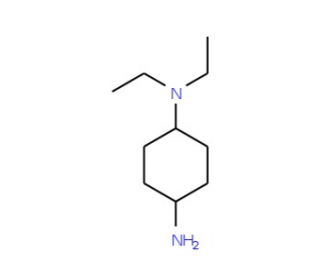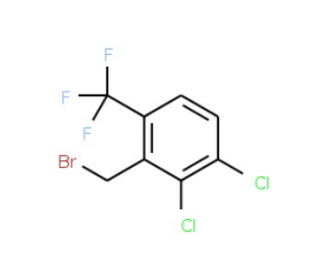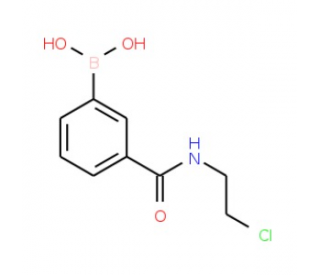详细说明
Species Reactivity
Human
Specificity
Detects human HSP90 alpha in Western blots. In Western blots no cross-reactivity with recombinant human HSP90 beta is observed.
Source
Polyclonal Rabbit IgG
Purification
Antigen Affinity-purified
Immunogen
Human HSP90 alpha isoform 1 synthetic peptide
Asp702-Met716
Accession # P07900Formulation
Lyophilized from a 0.2 μm filtered solution in PBS with Trehalose. *Small pack size (SP) is supplied as a 0.2 µm filtered solution in PBS.
Label
Unconjugated
Applications
Recommended
ConcentrationSample
Western Blot
0.5 µg/mL
See below
Please Note: Optimal dilutions should be determined by each laboratory for each application. are available in the Technical Information section on our website.
Data Examples
Western Blot | Detection of Human HSP90 alpha by Western Blot. Western blot shows lysates of HeLa human cervical epithelial carcinoma cell line. PVDF membrane was probed with 0.5 µg/mL of Rabbit Anti-Human HSP90 alpha Antigen Affinity-purified Polyclonal Antibody (Catalog # AF7247) followed by HRP-conjugated Anti-Rabbit IgG Secondary Antibody (Catalog # ). For additional reference, recombinant human HSP90 alpha and recombinant human HSP90 beta (5 ng/lane) were included. A specific band was detected for HSP90 alpha at approximately 90 kDa (as indicated). This experiment was conducted under reducing conditions and using . |
Preparation and Storage
Reconstitution
Sterile PBS to a final concentration of 0.2 mg/mL.
Shipping
The product is shipped at ambient temperature. Upon receipt, store it immediately at the temperature recommended below. *Small pack size (SP) is shipped with polar packs. Upon receipt, store it immediately at -20 to -70 °C
Stability & Storage
Use a manual defrost freezer and avoid repeated freeze-thaw cycles.
12 months from date of receipt, -20 to -70 °C as supplied.
1 month, 2 to 8 °C under sterile conditions after reconstitution.
6 months, -20 to -70 °C under sterile conditions after reconstitution.
Background: HSP90 alpha
The heat shock protein-90 kDa (HSP90) is a composite name for a large group of genes whose molecular weights average 90 kDa. HSP90 functions primarily as a molecular chaperone, facilitating the folding of other cellular proteins, preventing protein aggregation, or targeting improperly folded proteins to specific degradative pathways. HSP90 is ubiquitously expressed, highly conserved and accounts for 1‑2% of the total cellular protein. Recently introduced, standardized nomenclature has divided the 17 identified HSP90 genes into three related and one unrelated classes, HSP90AA1, HSP90AB, HSP90BB, and TRAP, respectively. Six of these genes were functional while the remaining 11 are considered putative pseudogenes. Eukaryotic cells have two principal forms of HSP90. The AF7247 antibody described here is specific to HSP90 the inducible form, HSP90AA1, also known as HSP90 alpha, HSP90A, HSPC1, HSPCA and HSP86. The other form is a constitutively expressed HSP90AB1 that is a 724 amino acid protein that is also known as HSP90-beta, HSP90B, HSPCB, HSPC2, and HSP89-beta. HSP90AB1-1 and HSP90AA share 90% identity. In addition to its role as a molecular chaperone and stress response protein, HSP90 is a central component in a number of basic cellular processes including hormone signaling and cell cycle control.
Long Name:
Heat Shock Protein 90 alpha
Entrez Gene IDs:
3320 (Human); 15519 (Mouse); 299331 (Rat)
Alternate Names:
FLJ31884; Heat shock 86 kDa; heat shock 90kD protein 1, alpha; heat shock 90kD protein 1, alpha-like 4; heat shock 90kD protein, alpha-like 4; heat shock 90kDa protein 1, alpha; heat shock protein 90kDa alpha (cytosolic), class A member 1; heat shock protein HSP 90-alpha; HSP86; Hsp89; HSP89A; HSP90 alpha; Hsp90; HSP90A; HSP90AA1; HSP90AHSP86; HSP90N; HSPC1; HSPC1HSP 86; HSPCA; HSPCAHSP89A; HSPCAL1; HSPCAL4; HSPN; LAP2; Renal carcinoma antigen NY-REN-38










 粤公网安备44196802000105号
粤公网安备44196802000105号